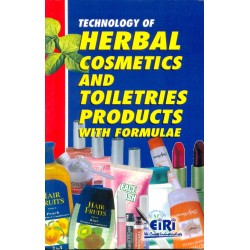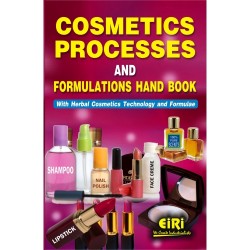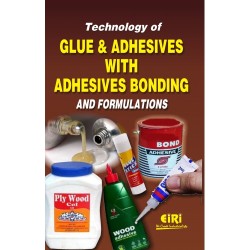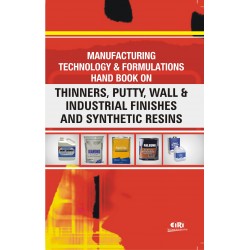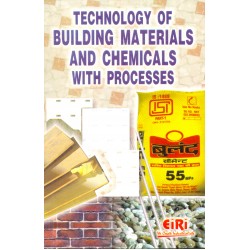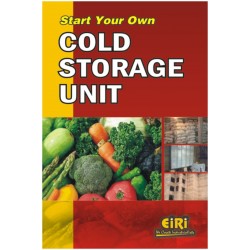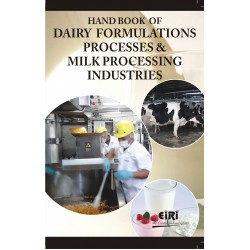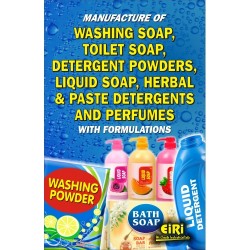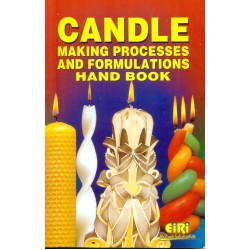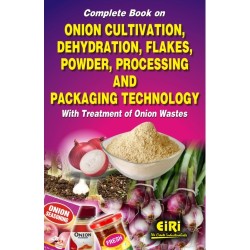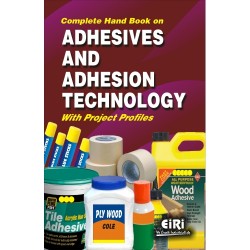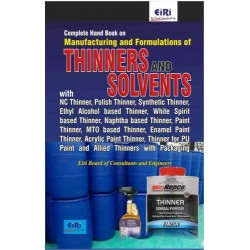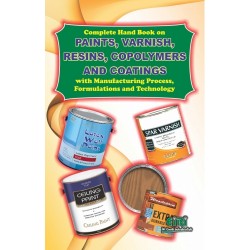Complete Hand Book Of Blow Moulding Plastics Technology With Project Profiles (Extrusion Blow Moulding, Stretch Blow Moulding, Injection Blow Moulding, Plastic Bottles Blow Moulding, Pet Blow Moulding And Rotational Blow Moulding)

- More than 40 years of experience
- Managed by expert industrial consultants
- ISO 9001-2015 Certified
- Registered under MSME, UAM No: DL01E0012000
- 24/5 Research Support
Get your quesries resolved from an industry expert. Ask your queries before report or book purchase. - Custom Research Service
Speak to the our consultant to design an exclusive study to serve your research needs. - Quality Assurance
All reports are prepared by highly qualified consultants & verified by a panel of experts. - Information Security
Your personal & confidential information is safe & secure.
The book covers Technology of Blow Moulding, Blow Moulding Process,Internal Cooling for the Blow Molding Industry, Multiaspect Analyzes of Blow Moulding Process, Plastic Bottle Blow Moulding, PET Blow Moulding Machines,Rotational Blow Moulding Process, Moulds, Rotational Blow Moulding Machinery, Materials for Rotational Blow Moulding, Quality Control in Rotational Blow Moulding, Plant Economics of blow Moulded Plastic Containers, Plant Economics of HDPE, PVC and CPVC Pipes and Fittings, Plant Economics of Injection and Blow Moulded Plastic Products, Plant Economics of Injection Moulded Plastic Autoparts, Plant Economics of Injection Moulding of Chairs, Plant Economics of Injection Moulding Unit, Plant Economics of PET Bottles Recycling Plant , Plant Economics of PET Injection moulding used Mainly for Mineral Water Packing (PET Preform), Plant Economics of Pet Preform and pet Jars, Plant Economics of Plastic Water Storage Tanks, Plant Economics of uPVC Windows from uPVC Profiles.
TECHNOLOGY OF BLOW MOLDING
- Extrusion blow moulding
- Continuous extrusion equipment
- Intermittent extrusion machinery
- Spin trimming
- Injection blow molding
- Injection Stretch blow molding process
- Advantages
- Disadvantages
- Basic Blow Moulding Process
- Extrusion Blow Moulding
- Injection Blow Moulding
- Stretch Blow Moulding
- Injection Stretch Blow Moulding
- Extrusion Stretch Blow Moulding
- Injection blow moulding
- Injection stretch blow moulding process sequence
- Polymers used for Blow Moulding Process
- Requirements for Blow Moulding Materials
- Process Based Requirements for Material Suitability
- Extrusion blow moulding
- Injection blow moulding/Stretch blow moulding
- Coextrusion blow moulding
- End use criteria for material selection
- Selection of Material for Packaging Application
- End use applications of polypropylene Blow moulded products
- Mineral water bottles
- Properties of Repol Blow Moulding Grades
- Why polypropylene for blow moulding
- Processing Polypropylene
- Screw and Barrel Design
- Processing Temperatures
- Tooling for Polypropylene
- Moulds
- Deflashing
- Parison Transfer
- Resin Properties
- Additives
- Shrinkage
- process of Blow moulding
- Basic Features of a Typical Mould
- Continuous extrusion machines
- Accumulator head machines
- Co-extrusion and sequential 3-D blow moulding
- Hard component Soft component
- Laydow process
- Movable mould
- Movable die head
- Laydown process
- Parison manipulation process
- 3D Suction process
- Injection blow moulding
- The blow moulding machine important considerations
- Screw and barrel design
- Suction blow moulding process
- Suction blow moulding process
- Suction blow moulding process
- Manifold/adapter design
- Accumulator & continuous extrusion head design
- Die/head tooling design
- Divergent head tooling
- Convergent head tooling
- Parison cutters
- Mould clamping force
- Temperature control
- Auxiliary equipment
- Machine operating conditions
- Quick reference
- Barrel temperatures
- Adapter, head and die temperatures
- Summary of processing recommendations for blow moulding resins
- Accumulator push-out pressures & speeds
- Parison programming
- Mould temperature
- Start up procedures
- Purging and shutdown
- Secondary operations
- Special conditions for injection blow moulding and pressblower (Ossberger) operation
- Injection blow moulding conditions
- Blow Moulding Conditions Ossberger SBE 50 Machine
- Handling of blow moulding resins
- Effects of moisture
- Drying
- Regrind
- Bulk Storage
- Mould design guidance
- General
- Blow up (draw) ratio
- Mould shrinkage allowances and part dimensions
- Pinch off designs
- Other mould considerations
- Double Dam Pinch off Design
- Troubleshooting guide
- Blow Molding Process
- Mold Sweat
- Internal Air Cooling Systems
- The Blowing Tools and the Blow Valve blocks
- The Blow Molding Booster
- The blow Air Chiller
- Schematic division of the blow moulding process
- Methodology
- Determination of the Barus number
- Measurements of the temperature distribution on the parison surface
- Registration of the phenomena which occur during the blowing stage
- Investigation results
- Barus effect
- Exampled of the results for Barus number for individual values of the extrusion nozzle gap G (mm
- Temperature distribution on the parison surface
- registration of the phenomenon which occurs during blowing process
- Background to the Industrial Energy
- Efficiency Accelerator
- Background to the plastic bottle blow moulding sector
- What the sector manufactures
- How the sector manufactures
- Factors affecting business decisions
- Customer demands
- Flow diagram showing the main stages of the extrusion blow moulding process and the major energy demands
- How energy is used in processing
- Extrusion blow moulding
- Flow diagram showing the main stages of the injection stretch blow moulding proces and the major energy demands
- Factors affecting business decisions in the plastic bottle blow moulding sector
- EBM Electricity consumption
- A breakdown of electricity consumption for an extrusion blow moulding machine
- Plastic Blow Moulding
- Injection stretch blow moulding
- A breakdown of electricity consumption during the blow stage of injection stretch blow moulding
- Impact of bottle weight
- Impact of speed of production
- Equipment idling
- Effect of different bottle weights on energy consumption for extrusion blow moulding processes
- The relationship between extrusion rate and power consumption of extruder and heater
- Power consumption (kW) of an EBM machine
- Power consumption (kW) of an ISBM machine
- Heat loss
- Thermal image showing heat radiating from a motor
- Operator practice
- Energy management
- Energy consumption of extrusion blow moulding machines for different bottle weights
- Energy consumption of injection stretch blow moulding machines for different bottle weights
- Energy consumption of extrusion blow moulding machines by rate of extrusion
- Opportunities
- Innovation in process control
- Control of granulators (EBM)
- Cost
- Barriers
- Production planning (ISBM)
- Cost
- Barriers
- Innovative equipment
- Induction barrel heating (EBM)
- Cost
- Heating the barrel using induction energy
- Barriers
- Barrel insulation (EMB)
- Barriers
- Infrared lamps (ISBM)
- Barriers
- Next steps
- Work together
- Install smart metering
- Think strategically
- Get support
- Detailed Description
- First Preferred Embodiments of a two stage process
- Side view of a prior art parison
- Side view of a parison incorporating features usable with embodiments of the present method
- Side view of a preform according to a further embodiment of the method
- Side view of a container formed
- Partial side sievational view of a blow moulded PET container formed from a preform usable with one embodiment of the method
- The steps of formation of a parison usable with another embodiment of the method
- Side view of a die in open position for manufacture of a preform
- The die of in closed position
- Top view of two stage injection, blow mould machine adapted to receive preforma and biaxially orient them into blow containers according to embodiments of the method
- Side section view of a lifting lowering and rotating mechanism for handle covers for use
- Side view of the die
- Alternative side section view of the mechanism
- First and second side section views of a preform adapted for loading into the machine
- Side section, close up view of the machine of Fig 6.9 showing a preform with handle cover lowered over the handle portion thereof
- Perspective view of the preform of Fig 6.13
- Perspective view of a container blow
- Top view of the mould
- Bottom view of Fig 6.17 with both half moulds in opposed retationship
- Further bottom view showing the preform in the position
- Plan view of a half mould adapted for blowing preforms on the machine
- Section view through the half mould
- Side view of the container blown in the mould from
- Side view of a preform incorporating an enlarged first nonexpanding region usable with embodiments of method
- Detail side section view of the neck and top handle portion of the container
- Section view through the mould
- An alternative side view of preform of Fig 6.24
- Side view of a container blown
- Side view of yet a further alternative embodiment of a preform incorporating a lengthened or enlarged first non expanding zone and adapted for blowing on the machine
- Perspective view of the preform of Fig 6.24
- Side view of a container blown from the preform of Fig 6.29 on the machine of Fig 6.9
- Perspective view of the container
- Side section view of a container blown in the mould
- Plan view of a half mould for blowing the preform
- Plan view of the half mould
- Detail side section view of the neck and top handle portion of the container
- First perspective view of a container usable with embodiments of the method particularly adapted to resist high internal pressures
- First side view of the container
- Second side view of the container
- second perspective view of the container
- Plan view of container
- Perspective view of the preform
- Side view of a preform from which the container can be blown
- Perspective view of a container with strap connected handle according to an embodiment of the method
- Side view of a preform from which the container
- Side section view of the resulting container blown from the preform of Fig 6.44
- Side section view of a preform having a multiple integral connection handle according to an embodiment of the method
- Side section view of an alternative embodiment of a container having a multiple integral connection handle
- Side section view of a preform having a multiple integral connection handle according to a further embodiment of the method
- Perspective view of the preform of Fig 6.48
- Side section view of a preform having a multiple integral connection handle according to a further embodiment of the method
- Perspective view of a container blow of a container blown from the preform
- Top view of the container of Fig 6.50
- Side view of a preform utilised as stock in a stretch blow moulding machine according to an embodiment of the method
- Bottom view of the container of fig 6.50
- Side view of a container produced from the stretch blow moulding machine according to a first embodiment of the method
- Plan view of a stretch blow moulding machine according to a first embodiment of the method
- Side view of the assembly of Fig 6.56 passing through a heating phase on machine
- Side view of the preform of Fig 6.53 being loaded onto a transport mandrel having a nesting shield for transport through the machine of Fig 6.55
- Side view of the assembly of Fig. 6.56 being aligned prior to entry into a die on machine of Fig 6.3
- Side view of the assembly of Fig 6.56 in an initial position within a die on the machine
- Perspective view of the shield of the assembly of Fig 6.56
- Perspective view of a 16 cavity preform mould suitable for injection moulding preforms in a first stage of a modified two stage process
- Side view of the assembly of Fig. 6.56 in a blow moulding position within the die of Fig 6.59
- Perspective view of a preform produced by the mould
- End view of the mould of fig 6.62 in substantially open position
- Side view, partially cut away of the mould of Fig 6.62
- End view of the mould of Fig 6.62 in substantially closed position
- Partially cut away view of the mould of Fig 6.62
- Partially cut away view of the mould of Fig 6.62 in substantially open condition
- Schematic plan view of a stretch blow moulding machine of a two stage process
- Detail of injector nozzles of the preform unit of Fig 6.62
- An end view of the mould of Fig 6.62 showing a preform injection operation,
- The injector nozzle arrangement of in a shut off condition
- Perspective detail view of a preform handle orienting apparatus
- Sectioned view of an oriented preform attached to a mandrel of the preheating stage transport system with the preform handle located in a heat shield.
- Perspective view of an indexing table for transferring oriented preforms to the mandrels of preheating stage transport system
- Enlarged sectioned side view of the preform and heat shield arrangement
- Preferred arrangement of a bank of heater elements arranged for preheating a preform according to the present method
- Orientation
- Description
- Detailed Description of Methods of Manufacture Incorporating Modified Two stage stretch blow moulding Machines
- Container Resistant to Internal Pressures
- Tag Connected Handle
- Second Preferred Embodiments of Modified two stage process
- First Preferred Embodiment of a Second Stage of a Two Stage Process
- Handle Orientation
- Transfer to Transport System and heating Stage
- Heating Stage
- Rotation Through Heat Conditioning
- Blow Moulding
- The four main stages of the rotational moulding process
- The Rotational Moulding Process
- Clamping of mould
- Top of mould is attached and clamped
- Operator begins charging mould
- Securing clamp
- Arm with mould & Rotolog moving into oven
- Powder pouring into mould
- Overview of Rotational Blow Moulding
- Arm begins to rotate as oven doors close
- Mould in demoulding bay being rotated into a convenient orientation to assist demoulding
- Lid removal using a crane
- Tank mould in cooler
- Removal of mould in insert holder
- Final part removal from mould
- Moulding ready for finishing operations
- PVC protector for sports helmet
- Polyurethane rotomoulded head
- Special Nature of Rotational Blow Moulding
- Stages during oven heating
- Advantages of Rotational Blow moulding
- Rotomoulded parts with & without bubbles
- Decorative lamp shades
- Disadvantages of Rotational Blow Moulding
- Sheet metal mould for a vertical tank
- Mould Materials
- Sheet steel
- Properties of common mould mateials
- Cast aluminium mould
- Aluminium
- Electroformed Nickel
- Electroplated nickel mould of mannequin head
- Comparison Between Mould Materials
- Mould Design
- mould Frame
- Moulded-in Inserts
- Multiple moulds on frame
- Moulded in Handles
- Temporary inserts
- Typical brass inserts
- Moulded in handle
- Movable Cores
- Threads
- Large mould with movable core to aid demoulding
- Movable core detail
- Mould Venting
- Thread detail improved through mold in Graphic Systems@Surface Enhancer
- Mould Surface Finish
- Highly polished mould
- Movable mould showing central vent
- Mould Release
- Mould Preparation for Release Agent
- Reactive Systems
- Disiloxanes
- Conventional Systems
- Permanent Systems
- Black teflon coated mould
- Hybrid Systems
- Types of Rotational Blow Moulding Machines
- Carousel Machines
- Fixed arm turret machine
- Independent arm carousel machine
- Two station shuttle machine
- Two station shuttle machine with cooler bay doors
- Shuttle Machines
- Clamshell Machines
- Clamshell machine open
- Clamshell machines in series
- Clamshell mechine closed
- Rock and Roll Machines
- Other Types of Machines
- Open flame rock and roll machine
- Rocking oven machine
- Rocking oven machines in series
- Mould opened on direct electrical heating machine
- Direct electrical heating machine
- Slip rings
- Leonardo automatic rotomoulding machine
- Mould Swing
- A typical drop arm
- Typical straight arm
- Mould swing diameters
- Mould Speed
- Speed Ratio
- Recommended speed ratios for various mould shapes
- Oven Air Flow Amplification
- Example of a Venturi (air mover)
- Cooling
- The Venturi principle
- Developments in Machine Control
- Internal Air Temperature Measurement in Rotational Moulding
- Typical temperature traces for a rotational moulding cycle
- Bubble formation and removal in rotational moulding
- The Rotolog process control system
- Monitoring Pressure Inside a Mould
- Pressure and temperature monitoring system on a rock and roll or rocking oven machine
- Pressure and temperature monitoring system using gas line on moulding machine
- Measurement of temperature and pressure in Rotating Mould
- Typical Characteristics of Rotationally Moulded Plastics
- Material Used in Rotational Moulding
- Polyethylene
- Typical usage of plastics in North American rotational moulding industry
- Rotomouldability of plastics
- Property changes with increasing melt index
- Density ranges of polyethylene
- Low Density Polyethylene (LDPE)
- High Density Polyethylene (HDPE)
- Typical chain branching in LDPE
- Low levels of chain branching typical of HDPE and MDPE
- Branching typical of LLDPE
- Medium Density Polyethylene (MDPE)
- Linear Low Density Polyethylene
- Property changes with increasing polyethylene density
- Metallocene Polyethylene
- Ethylene Vinyl Acetate (EVA)
- Ethylene Butyl Acrylate (EBA)
- Polypropylene (PP)
- Polyamides (Nylone)
- EVA traffic bollard
- Nylon 6
- Nylon 11 and Nylon 12
- Reaction Injection Moulding (RIM) Nylon
- Amorphous Materials
- Polyvinyl Chloride (PVC)
- Fluoropolymers
- Nylon roto lined pipe
- Other Plastics
- Additives Used in Rotational Moulding Materials
- PVC exercise/fitness device
- Rotomoulded polycarbonate part
- Fillers
- Plasticisers
- Calcium carbonate filler
- Lubricants
- Stabilisers
- Anti Oxidants
- Ultraviolet Stabilisers
- Flame Retardants
- Crosslinking Agents
- Foaming Agents
- Polyurethane foam filled trolley
- Drop box on mould
- Pigments
- Drop box on mould, open showing valve position
- Foam PE door panel
- Powders for Rotational Moulding-Grinding or Pulverising
- Powder pigments
- Stages in the grinding of powders for rotational moulding
- Hopper containing granules
- Granule feed system
- Typical grinding mill for polyethylene
- Vertical mill grinding head
- Typical vertical mill grinding plates for plastic powders
- Typical horizontal grinding plates for rotational moulding powders
- Horizontal grinding head
- Side view of cutting plates with different numbers of teeth
- Grinding plate
- Particle Size Distribution
- ASTM E-11 US sieve sizes
- Typical sieve shaker used for rotational moulding powders
- Typical particle size distributions for polyethylene used in rotational moulding
- Dry Flow
- Equipment required for dry flow and bulk density analysis
- Bulk density
- Factors Affecting Powder Quality
- Dry flow and bulk density apparatus
- Variation of dry flow rate with bulk density for rotomoulding powders
- Gap Size
- Number of Mill Teeth
- Grinding Temperature
- Effect of grinding temperature on bulk density and dry flow rate
- Effect of grinding temperature on particle shape
- Micropelletising
- Colouring of Plastics for Rotational Moulding
- Types of Pigments
- Typical tumble/dry blender
- Typical high speed blender
- Blender barrel
- Blender blades
- Compounding line
- Types of pigment
- Wall Thickness Distribution
- Cross section showing greater thickness in corner of rotomoulded part
- Typical wall thickness ranges for rotationally moulded plastics
- Tank with shielding on lid
- Shrinkage
- Dial gauge and microscope attachment for determining shrinkage
- Shrinkage Guidelines
- Linear shrinkage values for rotationally moulded polymers
- Control of Shrinkage
- Effect of Release Point on Shrinkage
- Effect of release temperature on shrinkage of rotationally moulded polyethylene with different typies of pigment
- Other Factors Affecting Shrinkage
- Release Temperature
- Natural PE
- Warpage
- Typical warpage values for rotationally moulded plastics
- Control of Warpage
- Warpage as a function of cooling method and mould material
- Warpage
- Distance along moulding
- Effect of internal cooling on the structure of a rotationally moulded plastic part
- Plant and Machinery
- Fixed Capital
- Raw Materials
- Total Working Capital/Month
- Total Capital Investment
- Turn Over/Annum
- Plant and Machinery
- Fixed Capital
- Raw Materials
- Total Working Capital/Month
- Total Capital Investment
- Turn Over/Annum
- Plant and Machinery
- Fixed Capital
- Raw Materials
- Total Working Capital/Month
- Total Capital Investment
- Turn Over/Annum
- Plant and Machinery
- Fixed Capital
- Raw Materials
- Total Working Capital/Month
- Total Capital Investment
- Turn Over/Annum
- Plant and Machinery
- Fixed Capital
- Raw Materials
- Total Working Capital/Month
- Total Capital Investment
- Turn Over/Annum
- Plant and Machinery
- Fixed Capital
- Raw Materials
- Total Working Capital/Month
- Total Capital Investment
- Turn Over/Annum
- Plant and Machinery
- Fixed Capital
- Raw Materials
- Total Working Capital/Month
- Total Capital Investment
- Turn Over/Annum
- Plant and Machinery
- Fixed Capital
- Raw Materials
- Total Working Capital/Month
- Total Capital Investment
- Turn Over/Annum
- Plant and Machinery
- Fixed Capital
- Raw Materials
- Total Working Capital/Month
- Total Capital Investment
- Turn Over/Annum
- Plant and Machinery
- Fixed Capital
- Raw Materials
- Total Working Capital/Month
- Total Capital Investment
- Turn Over/Annum
- Plant and Machinery
- Fixed Capital
- Raw Materials
- Total Working Capital/Month
- Total Capital Investment
- Turn Over/Annum
How to Make Project Report?
Detailed Project Report (DPR) includes Present Market Position and Expected Future Demand, Technology, Manufacturing Process, Investment Opportunity, Plant Economics and Project Financials. comprehensive analysis from industry covering detailed reporting and evaluates the position of the industry by providing insights to the SWOT analysis of the industry.
Each report include Plant Capacity, requirement of Land & Building, Plant & Machinery, Flow Sheet Diagram, Raw Materials detail with suppliers list, Total Capital Investment along with detailed calculation on Rate of Return, Break-Even Analysis and Profitability Analysis. The report also provides a birds eye view of the global industry with details on projected market size and then progresses to evaluate the industry in detail.
We can prepare detailed project report on any industry as per your requirement.
We can also modify the project capacity and project cost as per your requirement. If you are planning to start a business, contact us today.
Detailed Project Report (DPR) gives you access to decisive data such as:
- Market growth drivers
- Factors limiting market growth
- Current market trends
- Market structure
- Key highlights
Overview of key market forces propelling and restraining market growth:
- Up-to-date analyses of market trends and technological improvements
- Pin-point analyses of market competition dynamics to offer you a competitive edge major competitors
- An array of graphics, BEP analysis of major industry segments
- Detailed analyses of industry trends
- A well-defined technological growth with an impact-analysis
- A clear understanding of the competitive landscape and key product segments
Need Customized Project Report?
- Ask for FREE project related details with our consultant/industry expert.
- Share your specific research requirements for customized project report.
- Request for due diligence and consumer centric studies.
- Still haven't found what you're looking for? Speak to our Custom Research Team
About Engineers India Research Institute:
Note: We can also prepare project report on any subject based on your requirement and country. If you need, we can modify the project capacity and project cost based on your requirement.
Our Clients

Our Approach
- Our research reports comprehensively cover Indian markets (can be modified as per your country), present investigation, standpoint and gauge for a time of five years*.
- The market conjectures are produced on the premise of optional research and are cross-accepted through associations with the business players
- We use dependable wellsprings of data and databases. What's more, data from such sources is handled by us and incorporated into the report
Why buy EIRI reports?
- Our project reports include detailed analysis that help to get industry Present Market Position and Expected Future Demand.
- Offer real analysis driving variables for the business and most recent business sector patterns in the business
- This report comprehends the present status of the business by clarifying a complete SWOT examination and investigation of the interest supply circumstance
- Report gives investigation and top to bottom money related correlation of real players/competitors
- The report gives gauges of key parameters which foresees the business execution





















